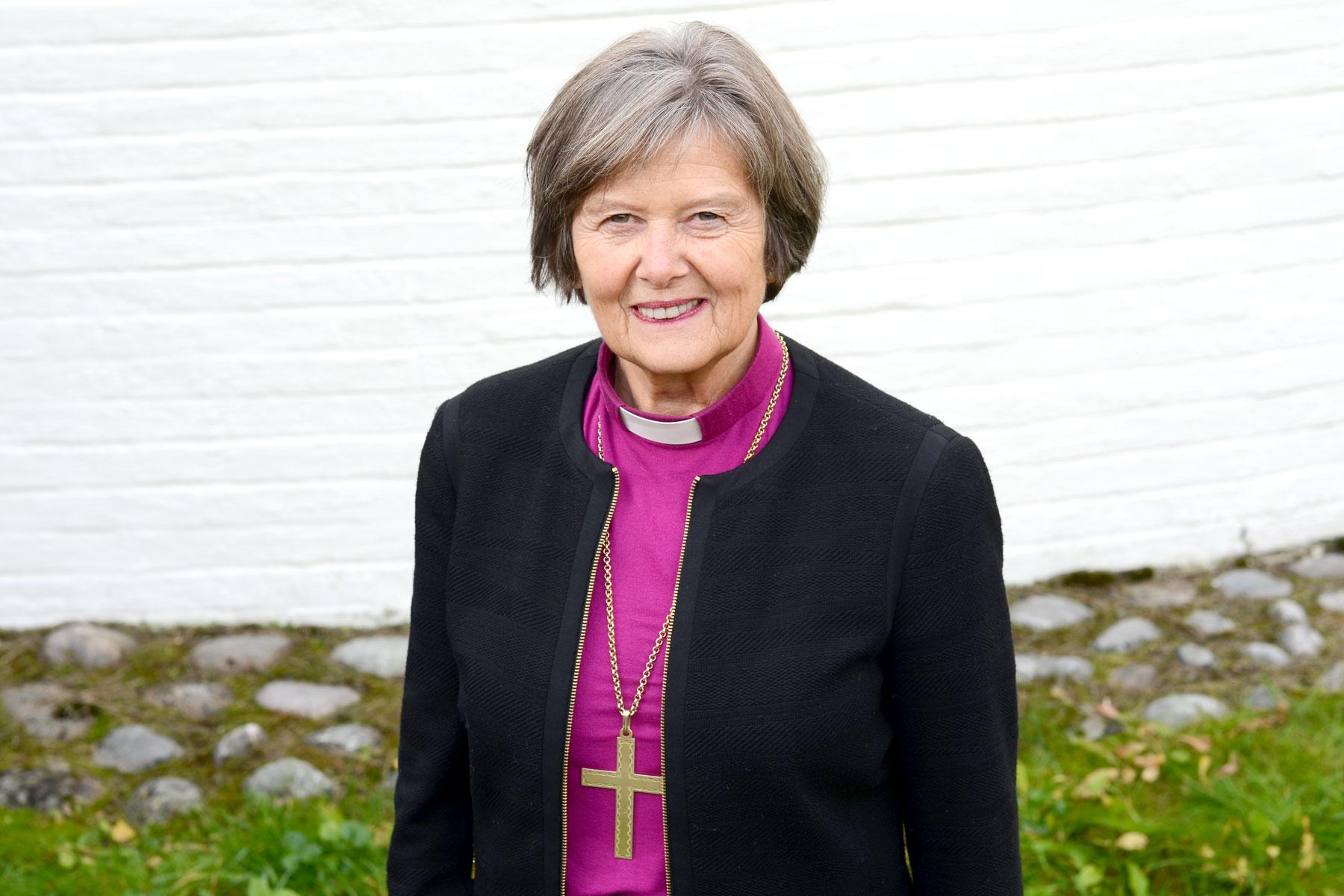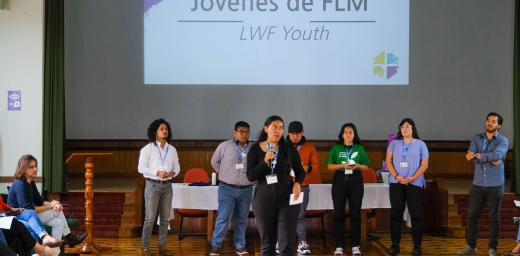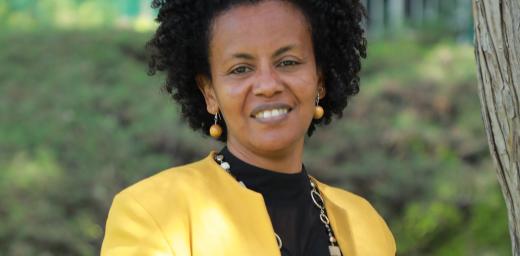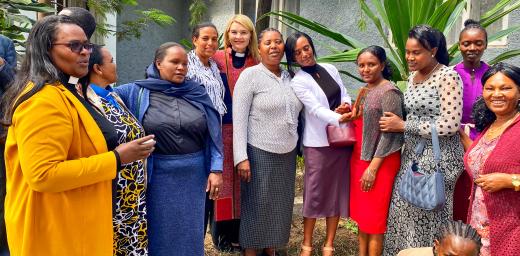Norway’s presiding bishop shares hopes and challenges

Bishop Helga Haugland Byfuglien, Presiding Bishop, Church of Norway. Photo: Hege Flo Ãfstaas/Church of Norway
Reaching out to all age groups and making faith relevant are defining priorities for this ‘vivid and vital’ church
(LWI) - In the very early hours of Easter Sunday morning, the leader of the Church of Norway, Presiding Bishop Helga Haugland Byfuglien will be presiding at worship inside the medieval Cathedral of Trondheim, waiting for the darkness of the empty tomb to give way to the light and new life of the Risen Christ.
As the first female Preses, or Presiding Bishop of the [Lutheran] Church of Norway, she has come a long way since her childhood in Bergen, where she attended Easter camps and first sensed the joy that this life-giving message can bring. She spoke with Lutheraran World Information (LWI) about issues that influence the vitality of the church.
Easter celebrations
“I think we are very lucky in our Nordic part of the world,” she says with a smile, noting that most people in her country associate Easter with the end of winter and the abundance of “new life in nature, a token of new life after the Resurrection.”
Traditionally, Norwegians head to the mountains for skiing during the Easter break, or to the seaside where many have holiday cabins to relax with family and friends. They’ve been longing for spring for many months, Byfuglien says, and they celebrate the promise of sunshine with favorite foods such as oranges and chocolate bars that evoke childhood memories (the popular Kvikk Lunsj bar was launched back in the 1930s).
Church participation
In Norway almost three quarters of the nation’s 5.3 million people belong to the Lutheran church, though participation in worship services is declining and the number of those who do not identify with any faith is rising year on year. In some parts of the country, Byfuglien notes, up to 90 percent of the population retains membership in the church, despite a significant drop in church baptisms and regular Sunday attendance. By contrast, she continues, numbers of church funerals remain high, despite alternatives on offer from the very active Norwegian Humanist Association.
To combat the downturn in regular attendance, the Church of Norway sends information and voting cards through the post at election time, as well as encouraging greater participation online and through social media sites. It is important not to underestimate the way people “reflect on their membership” and continue “to want to be part of the bigger fellowship of the church,” the presiding bishop insists.
Focus on baptism
“We have decided that the focus for the coming years must be on baptism,” Byfuglien says, “communicating why it is important to baptise your child” and offering more flexibility for services and drop-in baptisms. “We are mobilizing the whole church from top level down to local level to invite people in a way that makes it meaningful to come to church with their babies” but also to encourage older children and adults as well, she explains.
The the church remains ‘vivid and vital’ with ‘many things to make us optimistic.’
The bishop notes that “people between 20 and 40 are those missing in our congregations,” so it is vital to work with families “and to make spaces for people to feel welcomed as they are.” The numbers of confirmands are higher than those asking for baptism, she notes, so “we need to work on making the church relevant when they are seeking out their own way of life.” Even though it’s important to be realistic about numbers, she says, the church remains “vivid and vital” with “many things to make us optimistic.”
Interfaith cooperation
The former bishop of Borg, one of the larger dioceses outside Oslo, today plays an important role in encouraging cooperation and friendship between people of diverse religious and cultural backgrounds. She notes that there are up to 200,000 Muslims among recent immigrants, while over 50 percent of new arrivals are either Roman Catholics or members of Baptist and Pentecostal churches, all of which have seen increased membership. The Lutheran church plays an important role in both the Christian Council of Norway and the Council for Religious and Life Stance Communities in Norway.
Byfuglien recounts a “touching event at one of the bigger mosques in Oslo” in response to the 15 March massacre of worshippers at two mosques in Christchurch, New Zealand. She was among Catholics, Protestants and leaders of the life stance communities who gathered in solidarity with the Muslim community to express “the feeling that we want to protect one another. It makes us aware we are together in so much and, as the bigger church, we have a specific responsibility,” she says.
Independence from the state
Reflecting on the 2017 formal separation from the state, Byfuglien says the church is now freer to use its resources in an independent way, although like other churches and religious groups, it still receives municipal and state funding. She notes that “people from all parties and all parts of society” belong to the church, so there are “good communications with politicians” and a respect for the church’s view on issues like climate and migration.
The Church of Norway works together with other Christians “to lift up the bigger ethical issues around welcoming people in need,” she says, adding that “part of being credible means calling for policies that are not only ‘just’ but also human.”
A part of the global communion
Bishop Byfuglien also speaks about the way that recent celebrations of the 500th anniversary of the Reformation strengthened her church’s relations with the global Lutheran communion, “making us aware of the importance of being part of a wider church.” Like Lutheran leaders everywhere on Easter morning, she will be reflecting on the responsibilities that entails and celebrating the new life that comes from being freed from sin through Christ’s crucifixion.
As light breaks through the darkness in Trondheim’s ancient cathedral, she’ll be listening again to the story of Mary Magdalene, rushing to tell the other disciples that she has seen the Risen Lord. “We also should be running to tell the good news of the empty tomb!” she exclaims.
Church of Norway is a founding member church of the The Lutheran World Federation (LWF), and it has 3.7 million members. Presiding Bishop Helga Haugland Byfuglien served as LWF Vice-President for the Nordic region from 2010 until 2017.
The Lutheran World Federation is a global body that shares the work and love of Christ in the world. In this series, we profile church leaders and staff as they discuss topical issues and set out ideas for building peace and justice in the world, ensuring the churches and communion grow in witness and strength.





